Cheat Sheet: Panchayati Raj | Indian Polity for UPSC CSE PDF Download
Introduction
This chapter explains the Panchayati Raj system, which helps villages in India govern themselves and work on local development. It covers how the system started, how it became part of the Constitution, its main features, how it’s funded, and the problems it faces. The goal is to show how Panchayati Raj brings democracy to rural areas and helps communities thrive.
Evolution of Panchayati Raj
Panchayati Raj is about giving villages the power to make their own decisions. Starting with the Balwant Rai Mehta Committee, several groups studied and shaped the system, leading to its formal recognition in the Constitution through the 73rd Amendment in 1992.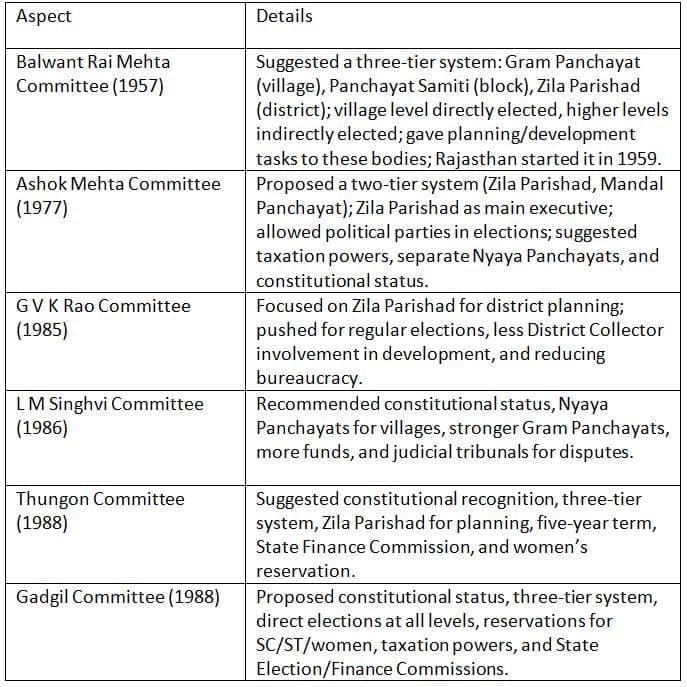
Key Points: Panchayati Raj evolved through committee recommendations that pushed for decentralized governance, constitutional recognition, and stronger local bodies, leading to the 73rd Amendment.
Constitutionalization of Panchayati Raj
Efforts to make Panchayati Raj a formal part of the Constitution started in 1989 but faced challenges. The 73rd Amendment in 1992 finally gave it legal status, creating a standard system for rural governance across India.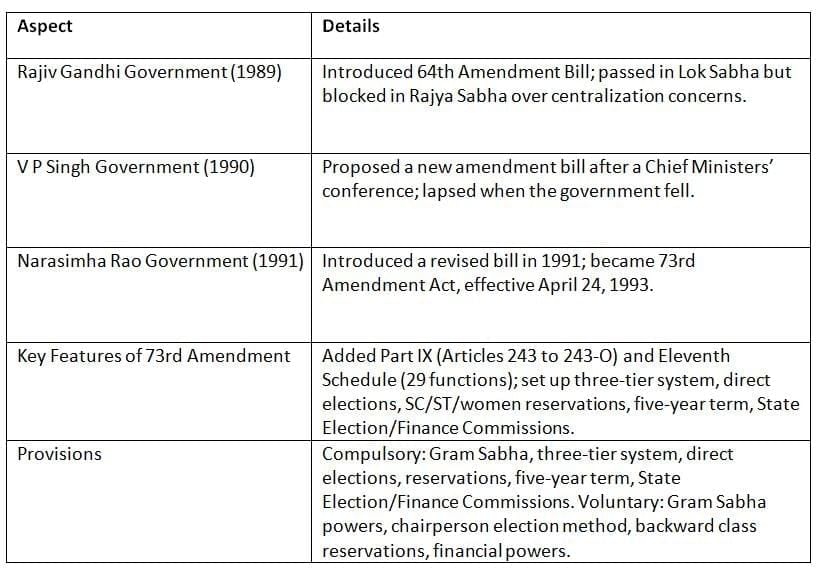
Key Points: The 73rd Amendment made Panchayati Raj a constitutional requirement, ensuring elections, reservations, and financial oversight while giving states some flexibility.
PESA Act of 1996
The Panchayats (Extension to Scheduled Areas) Act, 1996, brought Panchayati Raj to tribal areas, focusing on self-rule, protecting traditions, and involving communities through strong Gram Sabhas.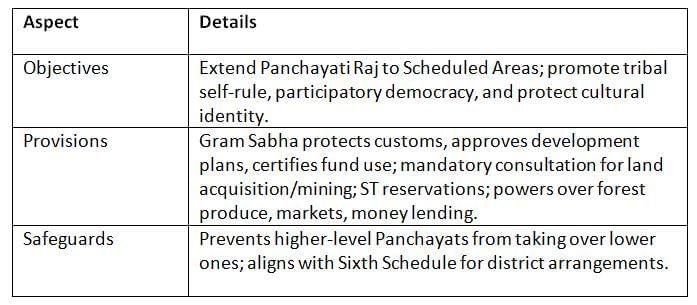
Key Points: The PESA Act empowers tribal communities by strengthening Gram Sabhas and giving them control over local resources and development.
Finances of Panchayati Raj
Panchayati Raj Institutions (PRIs) get funds from various sources, but struggle to be financially independent, as noted by the Second Administrative Reforms Commission (2005-2009).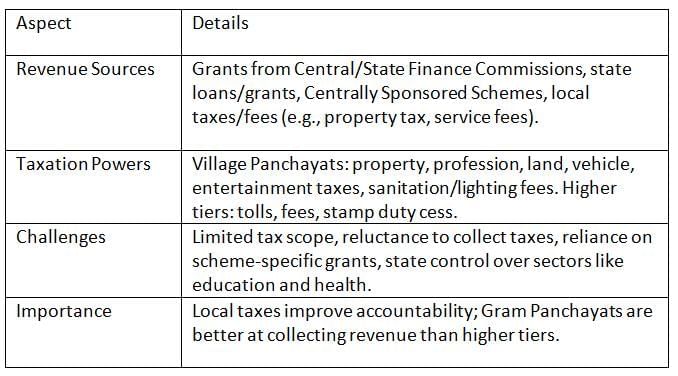
Key Points: PRIs face financial challenges due to limited tax collection, heavy reliance on grants, and state control, needing stronger local revenue systems.
Reasons for Ineffective Performance
Despite constitutional backing, PRIs struggle to perform effectively due to various issues, as highlighted by the Second Administrative Reforms Commission.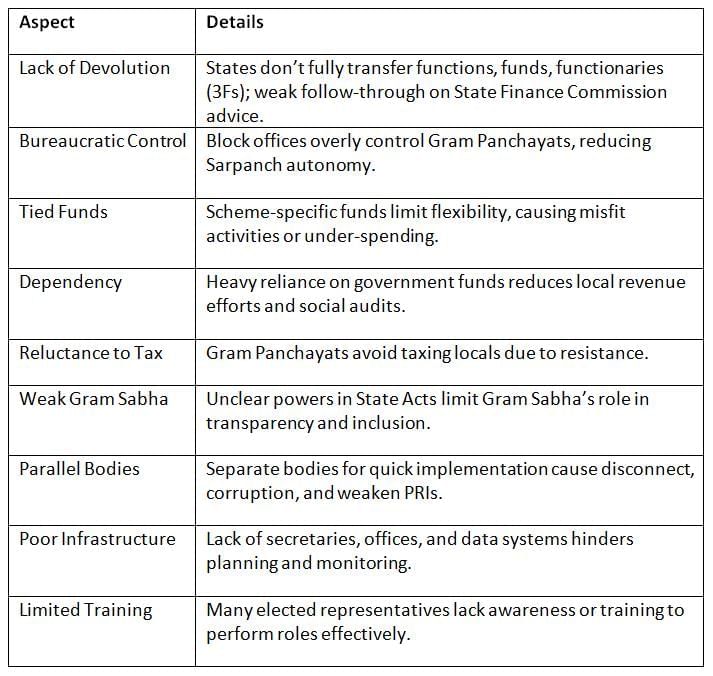
Key Points: PRIs face hurdles like limited devolution, bureaucratic interference, financial dependency, and poor infrastructure, needing reforms for better performance.
Chronology for Quick Revision
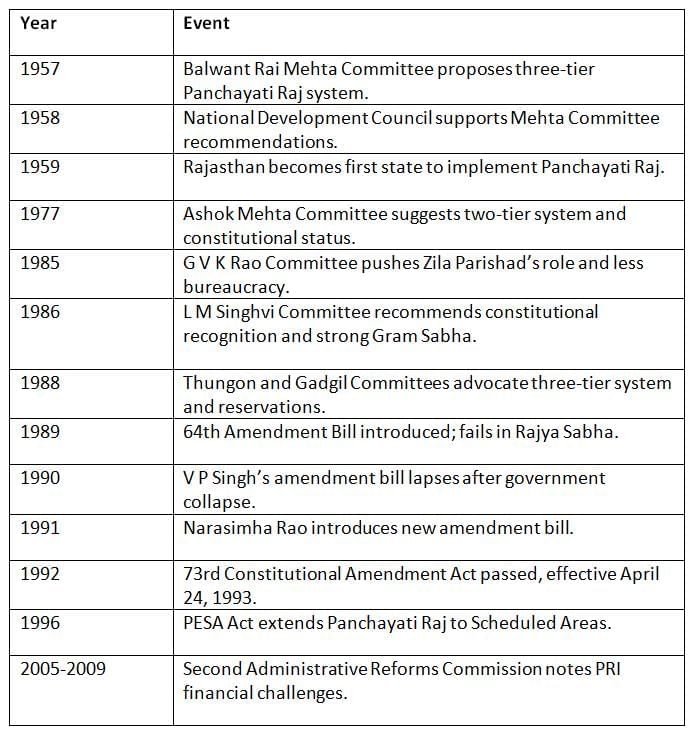
Conclusion
This chapter shows how Panchayati Raj brings democracy to India’s villages, helping them manage their own development. From its early development through committee recommendations to its constitutional status in the 73rd Amendment and the PESA Act for tribal areas, the system empowers local communities. However, issues like limited funds, bureaucratic control, and lack of training hold it back. Strengthening PRIs with more resources, autonomy, and support is key to building strong, participatory rural governance.
|
142 videos|777 docs|202 tests
|
FAQs on Cheat Sheet: Panchayati Raj - Indian Polity for UPSC CSE
| 1. What is the significance of the Panchayati Raj system in India? |  |
| 2. How was the Panchayati Raj system constitutionalized in India? |  |
| 3. What is the PESA Act of 1996, and how does it relate to Panchayati Raj? |  |
| 4. What are the financial challenges faced by Panchayati Raj institutions? |  |
| 5. What are the reasons for the ineffective performance of Panchayati Raj institutions? |  |





















